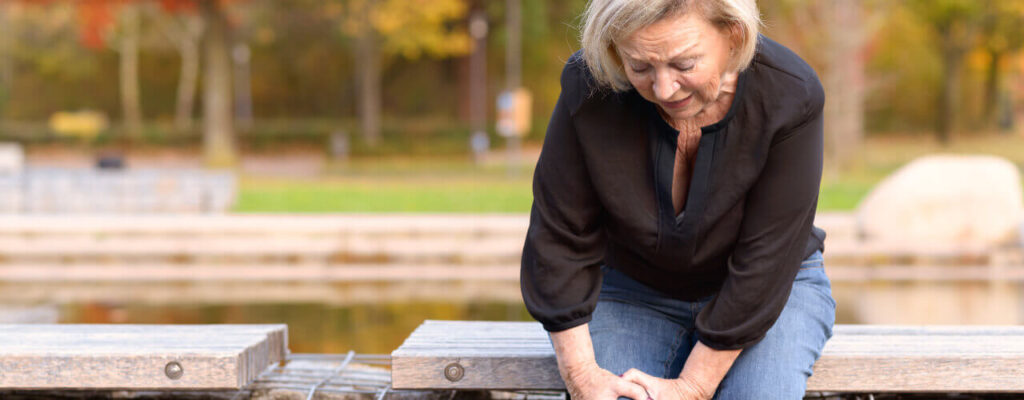Looking for Relief? Physical Therapy Has You Covered
Does nagging hip and knee pain keep you from completing everyday tasks with ease? If you’ve been living with chronic aches and pains in these areas, you may benefit from regular physical therapy treatment.
A skilled physical therapist can help to improve your daily quality of life by targeting your problem areas to decrease pain and boost mobility over time.
If you or a loved one experiences pain and discomfort when getting up from a chair, walking down to the corner store, or going up and down the stairs—there’s a good chance that physical therapy can help to ease your pain, stiffness, and weakness.
Call our offices today to learn more about how we can help to reduce your chronic hip or knee pain and be sure to schedule a free initial consultation with our physical therapist.
Why did my hip and knee pain develop?
The hips and knees are the largest joints in the human body and do much of the work in supporting your body weight.
They must both work together in close coordination to keep your body mobile but can easily be affected by injury, arthritis and other common conditions.
In some cases, knee and hip problems can be treated with certain exercises or pain relief medication. But it is also very common for hip and knee problems to worsen over time, making them difficult to treat with over-the-counter solutions.
Common conditions resulting in hip and knee pain
While each person is different, many of our physical therapy clients experience recurring hip and knee pain as a result of a few different causes.
These include:
- Core Muscle Injury — Notice a pain in your groin area after a weekend of playing ball with your pals? If so, you may be suffering from a core muscle injury, like a strain or tear of the muscles and soft tissues in your lower abdomen area. Rest can help this common injury, but we recommend scheduling an appointment with our physical therapist if the hip pain lasts for several days to a week or more.
- “Runner’s knee” – An unstable kneecap can lead to chronic knee pain. This condition is known as patellofemoral syndrome or “runner’s knee.”
- Bursitis — If you notice recurring pain on the outside of your hip, buttocks, or thigh, there’s a good chance that you have bursitis or inflammation of the cushioning pillow-like sacs that work to keep your tendons from rubbing against your bone. This is a common condition as we age and can be relieved with targeted physical therapy treatments.
- Strains, sprains, and ruptures – The knee and hip joints can move thanks to muscles, tendons and ligaments. Repetitive motion or acute injuries can cause a strain (damage to muscles or tendons) or a sprain (hyperextension of a ligament). Athletes are vulnerable to ruptures of the ACL (anterior cruciate ligament).
- Fractures — The bones of the knee can easily be broken during a fall, car accident or sporting accident. The risk of suffering a knee fracture increases as we age, as many older adults develop osteoporosis which weakens the bones. Physical therapy can help to reduce pain and inflammation after a fracture and increase mobility over time.
- Osteoarthritis – Osteoarthritis is a degeneration of the cartilage that normally keeps the bone ends in a joint from rubbing together. The resulting friction causes chronic pain and inflammation.
- Torn Meniscus — The meniscus is a tough, rubbery piece of cartilage that works as a shock absorber in the thigh bone and shinbone area. If you suddenly twist your knee while playing sports or attempting other strenuous moves, the meniscus can be torn, causing intense and long-lasting pain. Regular visits with our physical therapist can help to reduce your symptoms.
Ready to get started on a treatment plan?
Depending on the severity of your injury, physical therapy can provide a safe, non-invasive and holistic treatment option.
Physical therapy treatments for hip and knee pain may include stretching and strengthening, balance training, joint mobilization, electrical stimulation and more.
Our physical therapist will work with you to tailor a treatment plan that works to fit your specific lifestyle needs and can also help to create a comprehensive home exercise routine that will help you to maintain a better quality of life between appointments.
The sooner you seek physical therapy for knee or hip pain, the better. Research shows that patients who rehab their hip or knee pain with physical therapy within 15 days of symptom onset have less need for pain injections, medications, or surgical intervention.
Contact Goodlife Physical Therapy today to schedule your free initial physical therapy consultation.

